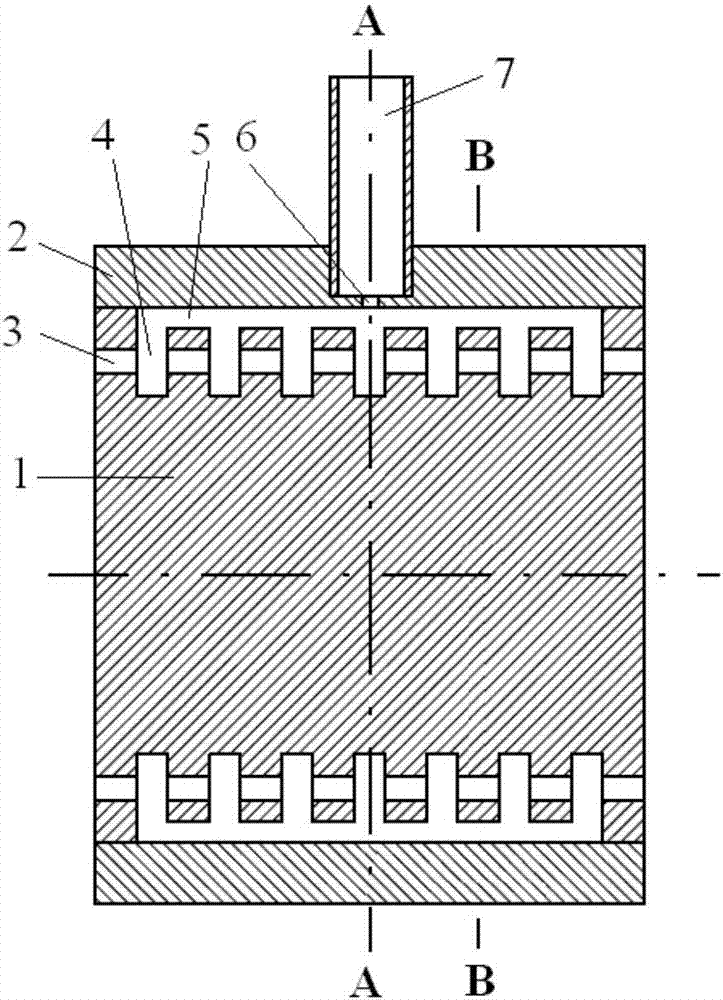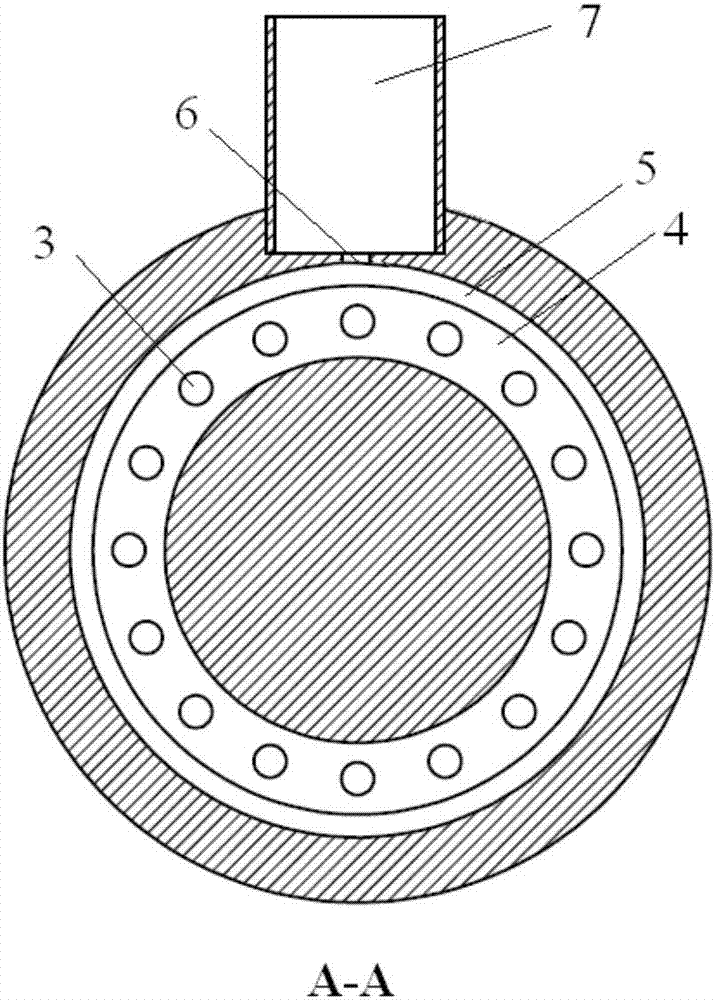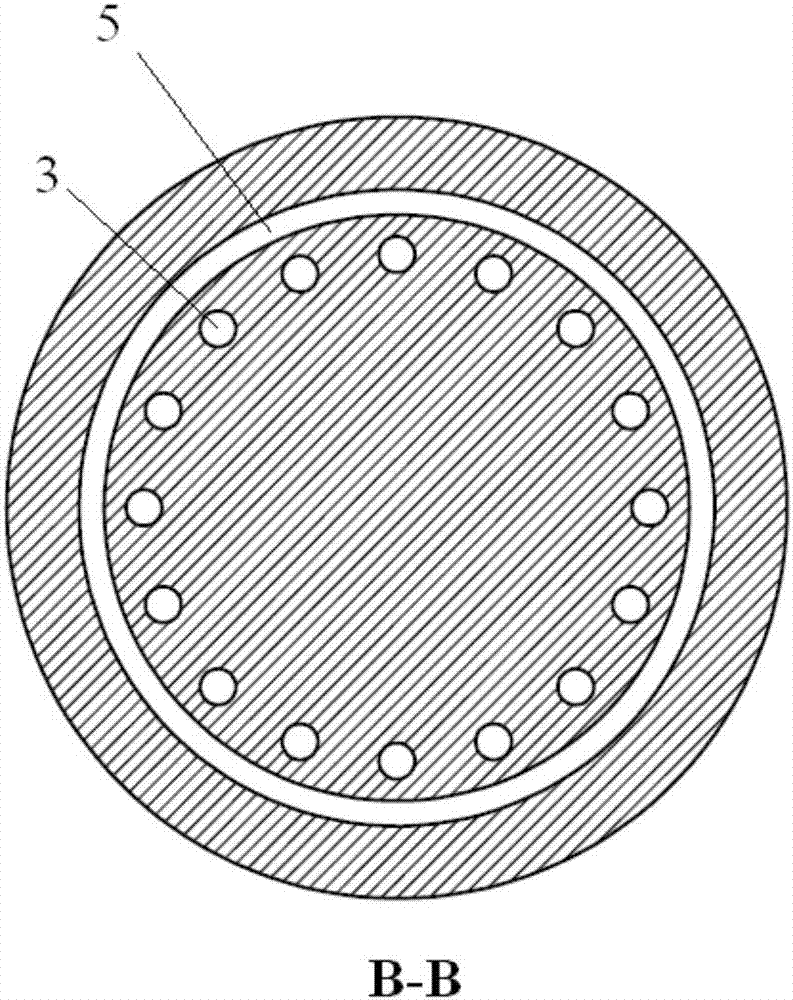Millimeter wave expansion interaction device adopting coaxial resonant cavities and multi-electron beams
A technology of extended interaction and coaxial resonant cavity, which is applied in the direction of circuit components of transit-time electron tubes, waveguide devices, and coupling devices of transit-time electron tubes. There are many fault points, etc., to achieve the effect of solving the limited output power, increasing the output power, and increasing the power capacity
- Summary
- Abstract
- Description
- Claims
- Application Information
AI Technical Summary
Problems solved by technology
Method used
Image
Examples
Embodiment Construction
[0012] In this embodiment, the working frequency is 94GHz (the corresponding working wavelength λ is about 3.2mm), the working voltage is 20kV, and the working is in the fundamental mode (TM 010 Take the extended interaction device in the mode) state as an example:
[0013] The nominal diameter of the core 1 is Φ8.7mm, the axial length is 8.0mm, the nominal inner diameter of the shell 2 is also Φ8.7mm, the outer diameter is Φ12mm, and the axial length is 8.0mm, and the material is oxygen-free copper; In this embodiment, 7 annular resonators 4 are arranged on the core body 1, and the inner and outer radii of each annular resonator are respectively R2.4mm, R4.0mm (that is, the radial height of the resonator is 1 / 2λ), the axial width of each annular resonant cavity is 0.40mm, the distance between two adjacent resonant cavities is 0.52mm, the axial length of the ring-shaped coupling channel 5 is 5.92mm, and the inner and outer radii are R4. 0mm, R4.35mm (that is, the radial clea...
PUM
 Login to View More
Login to View More Abstract
Description
Claims
Application Information
 Login to View More
Login to View More - R&D Engineer
- R&D Manager
- IP Professional
- Industry Leading Data Capabilities
- Powerful AI technology
- Patent DNA Extraction
Browse by: Latest US Patents, China's latest patents, Technical Efficacy Thesaurus, Application Domain, Technology Topic, Popular Technical Reports.
© 2024 PatSnap. All rights reserved.Legal|Privacy policy|Modern Slavery Act Transparency Statement|Sitemap|About US| Contact US: help@patsnap.com










